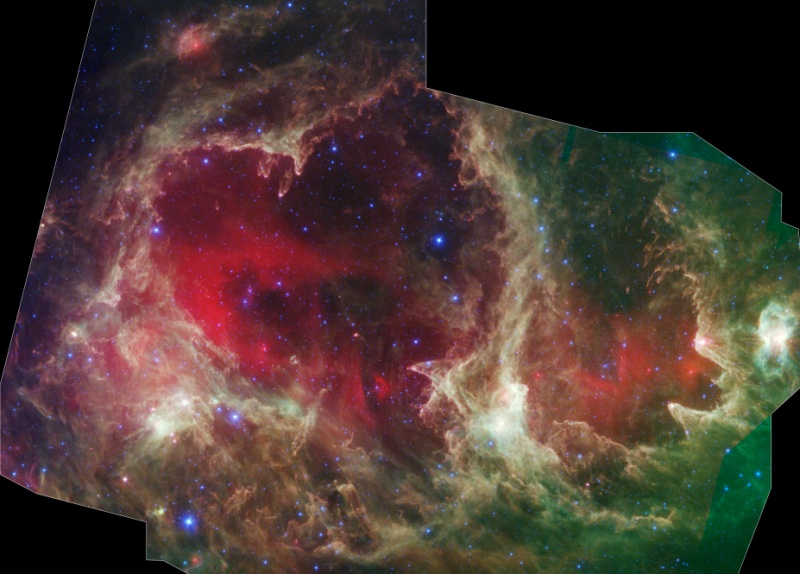Credit & Copyright:
Credit Lori Allen, Xavier Koenig (Harvard-Smithsonian CfA) et al., JPL-Caltech, NASA
Explanation:
Giant star forming region W5 is over 200 light-years across
and about 6,500 light-years away in the constellation
Cassiopeia.
W5's sculpted clouds of cold gas and dust seem to
form fantastic shapes in this
impressive mosaic of
infrared images
from the
Spitzer
Space Telescope.
In fact, the area on the right includes the structures previously
dubbed the Mountains of Creation.
New evidence indicates
that successive generations of stars
formed in the W5 region in an expanding pattern of triggered
star
formation.
The older, earlier generations of stars seem to cluster
near the middle of the enormous cavities, with younger stars
seen near the rims.
Winds and radiation from the older, central stars likely carve out
and compress surrounding
interstellar
material, triggering the
collapse that gave rise to younger, later generations of stars
farther out.
In
the false-color image,
heated dust still within the cavities
appears red, while the youngest stars are forming in the whitish areas.
W5 is also known as IC 1848, and together with IC 1805 it is part of
a complex
region popularly dubbed the
Heart and
Soul Nebulae.
Credit Lori Allen, Xavier Koenig (Harvard-Smithsonian CfA) et al., JPL-Caltech, NASA
1999 2000 2001 2002 2003 2004 2005 2006 2007 2008 2009 2010 2011 2012 2013 2014 2015 2016 2017 2018 2019 2020 2021 2022 2023 2024 2025 |
Январь Февраль Март Апрель Май Июнь Июль Август Сентябрь Октябрь Ноябрь Декабрь |
NASA Web Site Statements, Warnings, and Disclaimers
NASA Official: Jay Norris. Specific rights apply.
A service of: LHEA at NASA / GSFC
& Michigan Tech. U.
|
Публикации с ключевыми словами:
star formation - infrared - звездообразование - инфракрасное излучение
Публикации со словами: star formation - infrared - звездообразование - инфракрасное излучение | |
См. также:
Все публикации на ту же тему >> | |
